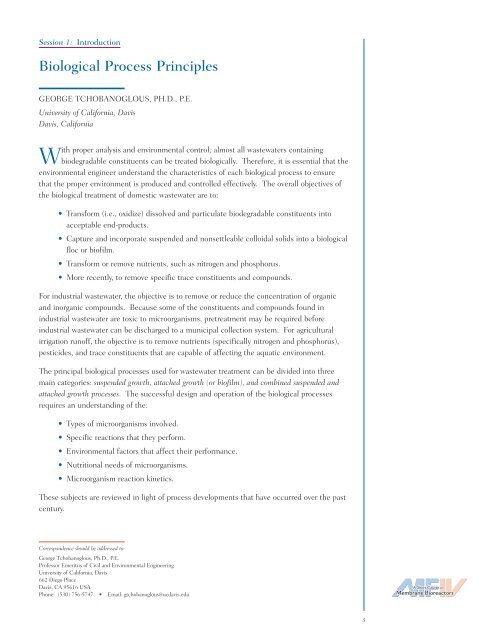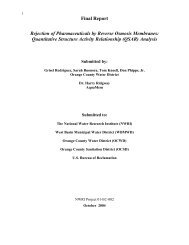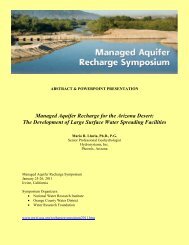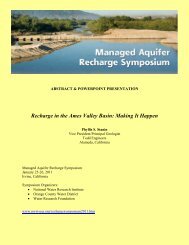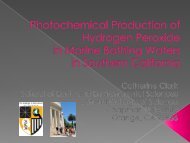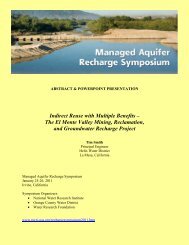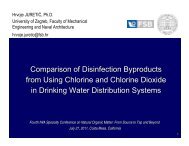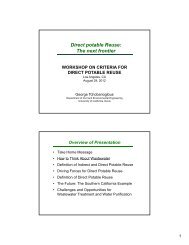Membrane Bioreactors Short Course Abstracts - National Water ...
Membrane Bioreactors Short Course Abstracts - National Water ...
Membrane Bioreactors Short Course Abstracts - National Water ...
Create successful ePaper yourself
Turn your PDF publications into a flip-book with our unique Google optimized e-Paper software.
Session 1: Introduction<br />
Biological Process Principles<br />
GEORGE TCHOBANOGLOUS, PH.D., P.E.<br />
University of California, Davis<br />
Davis, California<br />
With proper analysis and environmental control, almost all wastewaters containing<br />
biodegradable constituents can be treated biologically. Therefore, it is essential that the<br />
environmental engineer understand the characteristics of each biological process to ensure<br />
that the proper environment is produced and controlled effectively. The overall objectives of<br />
the biological treatment of domestic wastewater are to:<br />
• Transform (i.e., oxidize) dissolved and particulate biodegradable constituents into<br />
acceptable end-products.<br />
• Capture and incorporate suspended and nonsettleable colloidal solids into a biological<br />
floc or biofilm.<br />
• Transform or remove nutrients, such as nitrogen and phosphorus.<br />
• More recently, to remove specific trace constituents and compounds.<br />
For industrial wastewater, the objective is to remove or reduce the concentration of organic<br />
and inorganic compounds. Because some of the constituents and compounds found in<br />
industrial wastewater are toxic to microorganisms, pretreatment may be required before<br />
industrial wastewater can be discharged to a municipal collection system. For agricultural<br />
irrigation runoff, the objective is to remove nutrients (specifically nitrogen and phosphorus),<br />
pesticides, and trace constituents that are capable of affecting the aquatic environment.<br />
The principal biological processes used for wastewater treatment can be divided into three<br />
main categories: suspended growth, attached growth (or biofilm), and combined suspended and<br />
attached growth processes. The successful design and operation of the biological processes<br />
requires an understanding of the:<br />
• Types of microorganisms involved.<br />
• Specific reactions that they perform.<br />
• Environmental factors that affect their performance.<br />
• Nutritional needs of microorganisms.<br />
• Microorganism reaction kinetics.<br />
These subjects are reviewed in light of process developments that have occurred over the past<br />
century.<br />
Correspondence should be addressed to:<br />
George Tchobanoglous, Ph.D., P.E.<br />
Professor Emeritus of Civil and Environmental Engineering<br />
University of California, Davis<br />
662 Diego Place<br />
Davis, CA 95616 USA<br />
Phone: (530) 756-5747 • Email: gtchobanoglous@ucdavis.edu<br />
A <strong>Short</strong> <strong>Course</strong> on<br />
<strong>Membrane</strong> <strong>Bioreactors</strong><br />
3


